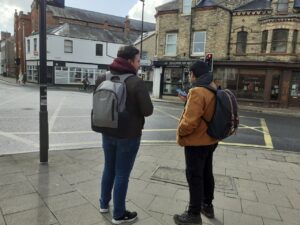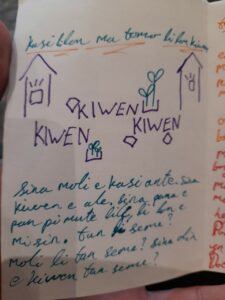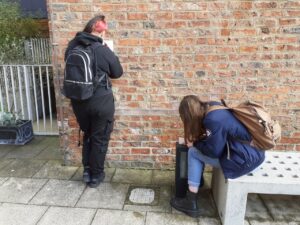Linguistics has clearly demonstrated that multilingualism expands what it is possible to imagine and languages provide rich insight into underlying processes that drive patterns of biodiversity (Trisos et al, 2021)
Dr Clare Cunningham, Senior Lecturer in Languages and Linguistics, writes on her Multilingualism module and ecological justice:
Finding a space for linguistics in the Living Lab: learning at the junction project has been an interesting challenge for us. Whilst language is at the heart of all social action and many of our societal ‘wicked problems’, considering the role of linguistic analysis or language choices can feel tangential to big issues such as ‘air quality’ and the ‘climate emergency’. But as eco-linguists like M. A. K. Halliday (1990) and Arran Stibbe point out, an understanding of how the language we choose to use perpetuates or changes a societal message or ideology is very valuable. Just look at the discursive shifts from ‘greenhouse effect’ to ‘global warming’ to ‘climate change’ to ‘climate emergency’…

Students noting the languages and language choices they found in York.
So it was that in Week 8, the first year students on our Multilingualism module had the chance to explore multilingualism and ecological justice, at first thinking about the dominant role that English plays in science communication. We looked at the work of Trisos et al (2021) in Ecology and also watched a video from influencer, Sophia Kianni, determined to make a change in this regard with ambitions to translate important climate messages into as many languages as possible. We thought about the affordances of indigenous and local languages, in that ‘knowledge holders often need to speak their own language to accurately describe ecological concepts and classifications’ and that ‘using multiple languages can yield richer biological descriptions’.

Zines were made using our full linguistic repertoires.
With this in mind (and taking our inspiration from Robert Macfarlane’s Landmarks book) we decided to try our hand at using our various linguistic and semiotic repertoires to describe the local landscapes of our campus and the junction. We headed into the streets during a seminar to record our sense of the environment, thinking about the words that came to mind in different varieties and languages, and to consider how language and semiotic features work in tandem at the junction. What messages do they communicate to us? We produced zines, and took photos, made a podcast and lots of drawings.

Students recording their findings.
The role of language in both welcoming people to the city and being controlling about exactly how to access it is notable at the junction. In terms of the words that sprang to mind here, we found the location elicited a fairly negatively-loaded vocabulary. The messages that nature itself seemed to be communicating was also observed by many of our students; with talk of ‘depressed’ trees struggling to fight against the poor air quality.
One student noted:
‘I think all the trees on the junction look absolutely knackered – really working hard against the air pollution, and suffering!’

Students creating zines.
Our photos show the stark differences between the curated, colourful natural world of the YSJ campus and the greyer environment at the junction, with the trees and shrubbery there once again seeming to bear the brunt of this stripping of life.
More work is definitely needed on noticing the role for language analysis as well as the more obvious visual semiotics in these spaces but we enjoyed our trip to the junction and now see it through a different lens!